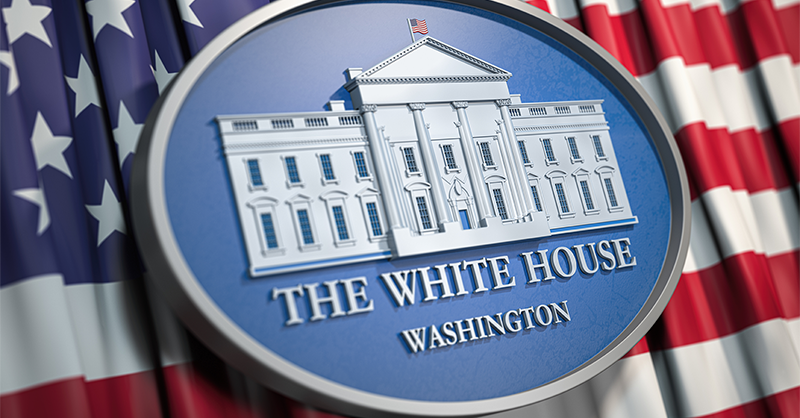FTC faces threats to independence, though White House already has strong influence
13 February 2023 00:00 by Claude Marx

Since its inception, the Federal Trade Commission has been an independent agency. But if some companies and their ideological allies have their way, the president may obtain more influence over it.
A longtime goal of the conservative legal movement has been to give the president more power and to tame the influence of unelected government employees. In recent years, the Supreme Court has been amenable to these arguments.
That’s why several companies that disagree with the actions the FTC has taken against them have fought the agency in court. Part of their argument is because the agency’s commissioners and administrative judge aren’t subject to removal by the president, their actions are unconstitutional. They contend since the agency has executive functions, the president should have greater hiring and firing discretion.
Walmart is using that argument in responding to the FTC’s lawsuit alleging the retail giant ignored fraudsters’ use of its money transfer services. The company didn’t secure the services offered and failed to warn customers, thus violating the Telemarketing Sales Rule, the agency contends.
Walmart denies the charges, questioning the FTC’s status as an independent rulemaking agency, and its ability to bring them. The retailer also says Congress has given the FTC more powers, such as the ability to obtain permanent injunctive relief and the right to seek monetary relief, transforming it into an agency that exercises “executive litigation powers.”
Armor manufacturer Axon is opposing the constitutionality of the FTC’s structure. It alleges the agency’s rule that administrative law judges can only be removed by commissioners sets up “dual-layer for-cause removal protections [that] unconstitutionally insulate such officers from the control of the President.”
The FTC filed an injunction to block Axon’s acquisition of rival Vievu, but Axon sued the FTC claiming the administrative court proceedings result in the agency being a prosecutor, judge and jury.
The FTC won at the district court level and at the US Court of Appeals for the Ninth Circuit. The Supreme Court heard arguments in the case last year, but it won’t rule on the constitutionality of the agency’s structure, only whether that structure can be challenged before the administrative court proceedings are completed. The appellate court did stay the administrative trial at the FTC while the court case proceeds.
According to the Supreme Court, whether an agency exercises executive powers is key to how much leeway the president has in hiring and firing its senior officials.
In its 1935 decision in Humphrey’s Executor v. US, (a challenge to President Franklin D. Roosevelt’s attempt to fire an FTC commissioner), the court insulated board members of multi-member independent rulemaking commissions from most removals. But the high court modified its position in 2020 in Seila Law v. Consumer Financial Protection Bureau, when it ruled the president must be able to remove at will officials of any agency that exercises executive power.
One of the differences between the FTC and executive branch agencies such as the Department of Justice is the insulation from at-will removal is supposed to give FTC commissioners more independence.
But a former senior official at both agencies told FTCWatch there is little difference between the amount of power the White House has at the DOJ and FTC.
While the FTC is independent, there are ways the president influences the agency, beyond naming commissioners and some officials in the front office. The executive branch controls much of the agency’s budget, though parts of its funding come from fees such as those paid by merging companies.
In addition, when the agency embarks on rulemaking, before the FTC opens the rules up for public comment, it must submit proposed rules to the Office of Management and Budget’s Office of Information and Regulatory Affairs (OIRA) for review and approval.
OIRA was created by the Paperwork Reduction Act, passed by Congress during the Carter administration. At that time, many Capitol Hill critics in both parties and in the business community felt agencies like the FTC had issued rules or proposed rules that were too burdensome. A Washington Post editorial said the agency was in danger of becoming a “national nanny.”
Although the president can’t order the FTC to do something, he can strongly encourage it do so. FTC chairs usually go along but not always.
In 2020, then-President Donald Trump signed an executive order saying the FTC “shall consider taking action, as appropriate and consistent with applicable law, to prohibit unfair or deceptive acts or practices in or affecting pursuant to section 45 of title 15, United States Code.” [Also referred to as the FTC Act, Section 5.] The order also asked the agency to analyze social media content that had been the subject of public complaints.
But then-FTC Chairman Joe Simons demurred. During a Senate Commerce Committee oversight hearing, he said: “Our authority focuses on commercial speech, not political content curation. If we see complaints that are not within our jurisdiction, then we don’t do anything.”
In 1887, Congress passed the Interstate Commerce Act. It created the first independent regulatory agency, the Interstate Commerce Commission, to oversee the railroad industry. The FTC was launched in 1914.
The law distinguishes between independent agencies and executive branch agencies, such as the Environmental Protection Agency, which are generally run by a single director who can be removed for any reason.
Related Articles
No results found
